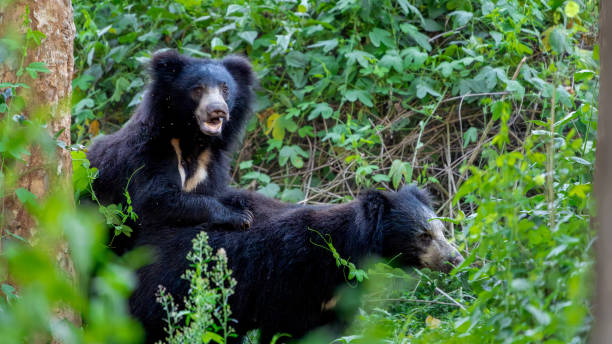Unraveling the Secret World of Sloth Bears: Nature's Misunderstood Acrobats
In the dense forests of the Indian subcontinent, a peculiar creature roams the treetops and forest floors. With shaggy fur, long curved claws, and an insatiable appetite for insects, the sloth bear stands out as one of nature's most intriguing yet misunderstood mammals. This article delves into the fascinating world of these unique bears, exploring their behavior, habitat, and the conservation efforts aimed at protecting them.

The Evolutionary Tale of Sloth Bears
The story of sloth bears begins millions of years ago when they diverged from other bear species. Fossil evidence suggests that sloth bears evolved to fill a unique ecological niche in the tropical forests of South Asia. Their specialized anatomy, including elongated lower lips and lack of upper incisors, points to an evolutionary path shaped by their insectivorous diet.
Unlike their ursine cousins, sloth bears developed powerful forelimbs and long, curved claws ideal for digging and climbing. This adaptation allowed them to access termite mounds and bee hives, their primary food sources. Over time, their skulls also evolved to withstand the stress of sucking insects out of their nests, a feeding behavior unique among bears.
A Day in the Life of a Sloth Bear
Sloth bears are primarily nocturnal, becoming active at dusk and foraging throughout the night. Their days typically begin with emerging from their daytime resting spots, often rocky crevices or dense undergrowth. As twilight sets in, these bears embark on their nightly quest for food.
Their foraging behavior is a sight to behold. Using their powerful sense of smell, sloth bears locate termite mounds or bee hives. They then employ their long claws to tear open the nests and use their elongated lower lip and palate to create a vacuum-like seal. This allows them to suck up insects with a loud, distinctive slurping noise that can be heard from a considerable distance.
The Social Structure and Reproduction of Sloth Bears
Contrary to many bear species, sloth bears are not entirely solitary. While adult males tend to be loners, females often form loose associations with their cubs that can last for several years. This extended period of maternal care is crucial for the survival of young bears in the challenging forest environment.
Mating season for sloth bears typically occurs between May and July. After a gestation period of about seven months, females give birth to one or two cubs in caves or rocky shelters. The cubs are born blind and helpless, relying entirely on their mother for protection and nourishment. They remain with their mother for up to two and a half years, learning essential survival skills before venturing out on their own.
Conservation Challenges and Human-Bear Conflict
Despite their formidable appearance, sloth bears face numerous threats in the wild. Habitat loss due to deforestation and agricultural expansion has significantly reduced their range. Additionally, these bears often come into conflict with humans, leading to retaliatory killings.
One of the most pressing issues is the practice of ‘dancing bears,’ where cubs are captured and trained to perform for tourists. Although this practice has been officially banned in India since 1972, it persists in some areas, contributing to the decline of wild populations. Conservation organizations are working tirelessly to rescue these bears and rehabilitate them in sanctuaries.
The Future of Sloth Bears: Conservation Efforts and Hope
Efforts to protect sloth bears have gained momentum in recent years. Wildlife sanctuaries and national parks across India, Nepal, and Sri Lanka now serve as crucial habitats for these unique animals. Conservation programs focus on habitat restoration, anti-poaching measures, and community education to reduce human-bear conflict.
Innovative approaches, such as the use of motion-activated cameras and GPS tracking, are providing researchers with valuable data on sloth bear behavior and movement patterns. This information is crucial for developing effective conservation strategies and ensuring the long-term survival of the species.
As we continue to unravel the mysteries of sloth bears, it becomes increasingly clear that these remarkable animals play a vital role in their ecosystems. Their unique adaptations and behaviors offer valuable insights into the diversity of life on our planet. By protecting sloth bears and their habitats, we not only ensure the survival of a fascinating species but also preserve the delicate balance of the forests they call home.





